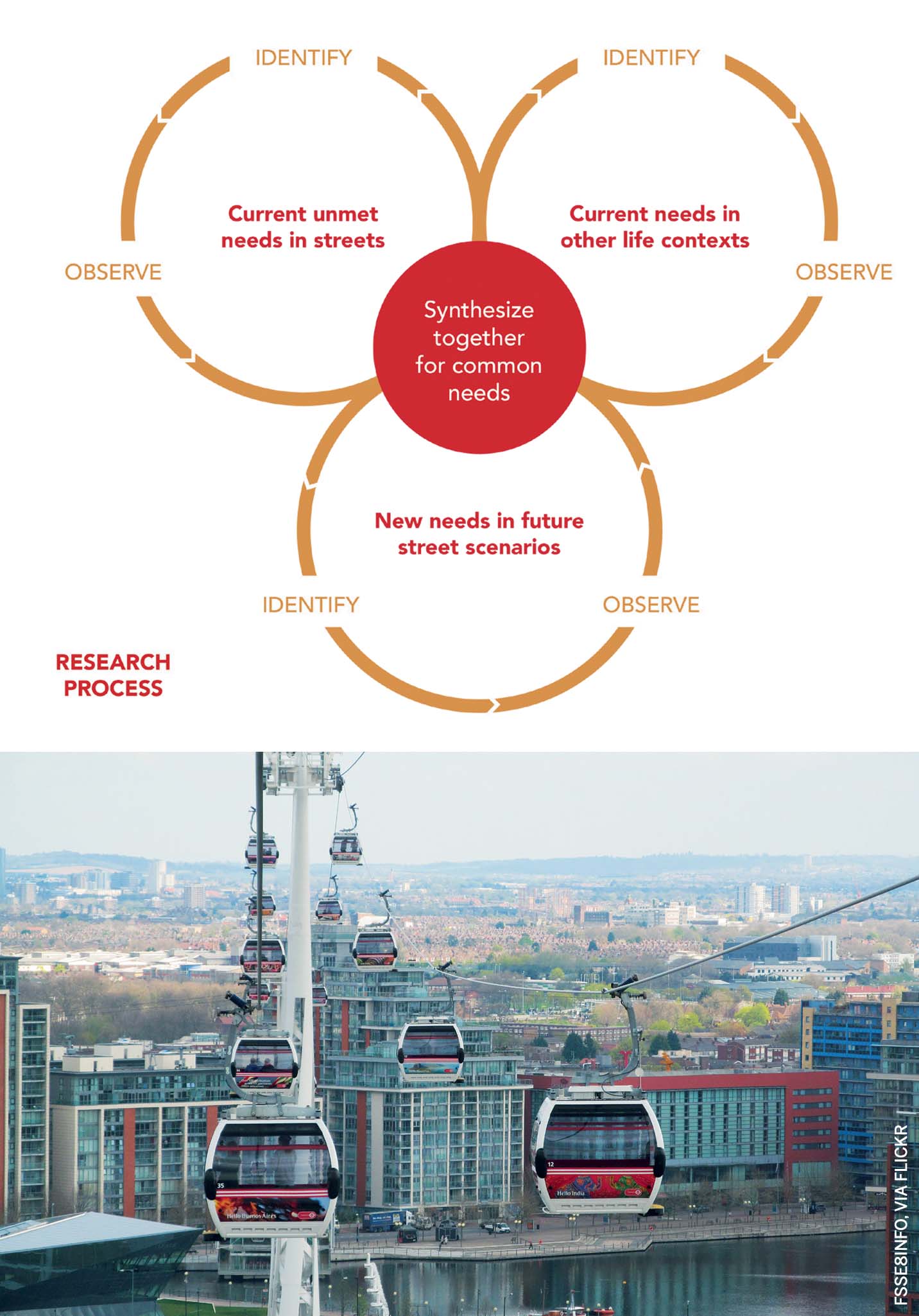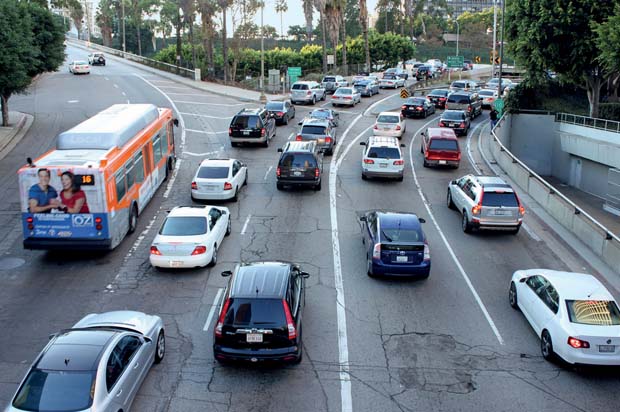“Human Experience is the future of design,” claims Gensler, the largest architectural design firm in the world, continuing that “people are the one constant in this era of dramatic technological change, demographic shifts, global volatility and climate change.” Approaching every issue, opportunity and solution with a human-centered lens is quickly becoming the norm in the industry, having acknowledged its potential for relevance and adoption.
So, what does it mean to experience a street? How might one describe the feeling of riding a bike down a street, waiting for a bus, walking their daughter to school or zipping down a highway? The answer is not likely to be a straightforward one because, in most contexts around the world, a specific experience isn’t being designed. And the lack of design intent can be linked back to the lack of design authority at the decision-making level: who is responsible for mapping journey experiences for numerous user groups, worrying about their feelings?
UK’s ‘Manual for Streets’ from 2007 states: “For the last 50 years, urban street planning and design have been led by traffic engineers who have given priority to the needs of motor vehicles.” No doubt this prioritisation has resulted in unattractive environments for all other users and it is time for humans, not material objects, to be brought back to the centre of the conversation.
With growing focus on the human experience in other sectors like retail, entertainment, workplace and so on, it is important for urban street planners to step up their design intent and fill the gap in the experience, or someone else will. The opportunity for impact is tremendous with the scale and penetration of streets: every city resident is the target market. It is only a matter of time until the private sector finds a creative way to affect the streetscape.
 |
In one quirky example from 2015, a couple from the San Francisco Bay Area were able to quietly purchase one of the most exclusive private streets in the city – Presidio Terrace – available for sale through the city’s auction block due to an unpaid tax bill. The sale is now being contested in court but presents an interesting scenario: how might the owners have developed a signature experience for street users? They might have gotten away with almost anything and turned it into an eye-opening case study for urban street design.
What would it look like for streets to specifically design the experience for its numerous user groups? Every detail of using streets for a journey or as a destination would be thoughtfully facilitated: streets might offer amenities for dog walkers, wayfinding relevant to users beyond cars, delightful interactions while crossing the street or, even better, ownership of public infrastructure.
But with street design undergoing a rebirth in this time of ridesharing, electric scooters and driverless cars, the stage is set for a new job description for the street. What is it supposed to do and for whom? Street design needs to fundamentally shift its ‘user’ from objects to human beings using the objects: drivers instead of cars, cyclists instead of cycles, riders instead of scooters and so on. If most of our future ‘drivers’ are robots, they don’t need the same infrastructure, rules or signals as humans and it is time to forecast the needs of tomorrow.
Street design needs to fundamentally shift its ‘user’ from objects to human beings
So how might we identify our future needs and demand new experiences from streets? Should we imagine streets as an extension of our living or dining rooms? Should we rethink these arteries as thin forests or food growing areas or interpret street intersections as art canvases? There are endless possibilities down this rabbit hole; how will we know which responds to a true need versus indulging in a quirk?
This search calls for a process that combines insights from future street scenarios as well as contexts outside the street, synthesised together to identify common patterns of need. This way, we are reimagining the entire system, bringing over opportunities from our lives that may be directly or indirectly satisfied on the streets of tomorrow. For example, the need for noise adsorption and wanting to eat locally may have a common solution on the street: plant fruit-bearing trees managed through a creative ownership model.
It is clear that solutions for tomorrow need the full collaborative might of design thinkers, strategists, service designers, engineers and urban designers. Without a holistic delivery model, none of the disruptive innovations for street design may see the light of day or be sustained long enough to make a difference in the lives of residents.
In this time of disruptive changes in the industry, it is important to recognise that the current job of a street is very different from its future job and riding this wave of change should elevate the needs of human beings – not of objects – to centre stage.



Comments (0)